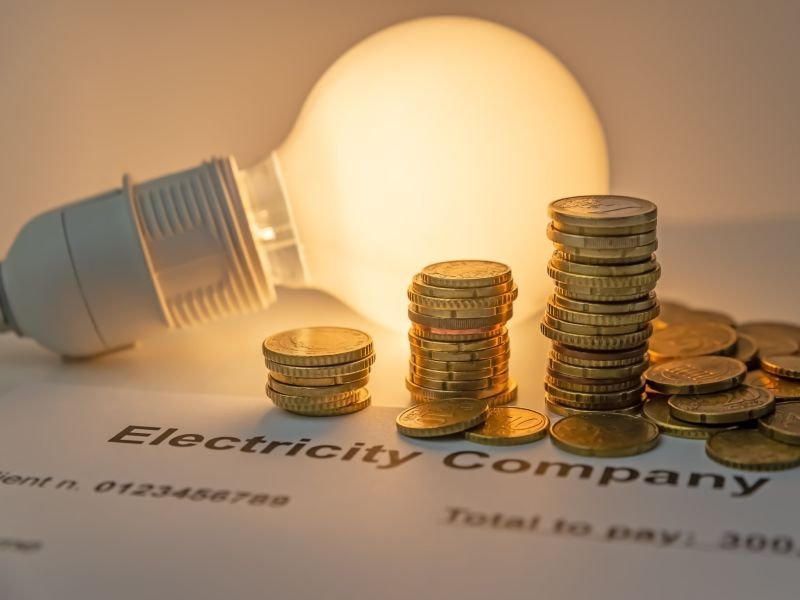The Public Utilities Regulatory Fee (PURC) has elevated electrical energy tariffs for the third quarter of 2025 by 2.45%. This transfer comes as a shock to many, together with PURC itself, since all conventional indicators pointed to a discount.
In April 2025, the Fee had already carried out a 14.75% enhance for the primary and second quarters. Given latest financial beneficial properties, a discount appeared extra doubtless.
Electrical energy tariffs in Ghana are reviewed quarterly, utilizing 4 main indicators: the Cedi–US Greenback change fee, the inflation fee, pure fuel costs, and the nation’s electrical energy era combine.
These parameters type the premise of Ghana’s Vitality Sector Restoration Programme and are a part of conditionalities agreed with the IMF.
By these requirements, tariffs ought to have declined. The cedi has appreciated sharply from ₵15.5 to the greenback earlier this yr to round ₵10.3 in the present day, and continues to indicate indicators of stability.
Inflation has fallen from 23.5% in January to 18.4% in Could, with expectations of additional easing as merchants modify costs in response to forex beneficial properties. The value of pure fuel has remained comparatively secure. Though Center East tensions pose a threat, they haven’t but disrupted fuel markets.
Even PURC admits the numbers favored a lower. Its Director of Analysis, Dr. Eric Obutey, instructed JoyNews Analysis that based mostly on the normal methodology, electrical energy tariffs ought to have gone down.
So why the rise?
PURC has launched new components into its tariff computation. These embody excellent money owed throughout the vitality sector, reserve capability necessities, and the price of liquid fuels.
Based on PURC, there may be an excellent debt of ₵488 million that this adjustment goals to start clearing. The debt alone accounts for the majority of the two.45% hike.
Then there may be reserve capability. Ghana presently consumes practically all the ability it generates, leaving little margin for emergencies. PURC says together with a buffer within the tariff construction to create extra capability is critical to forestall blackouts and scale back the chance of future instability.
Essentially the most controversial addition, nonetheless, is the partial inclusion of liquid gasoline prices.
On June 3, 2025, the federal government, by way of the Finance and Vitality Ministries, handed an extra ₵1 levy on petrol and diesel beneath the Vitality Sector Levy (ESLA). The rationale was to boost funds to purchase liquid fuels for thermal crops amid fuel shortfalls. On the time, Finance Minister Ato Forson warned that with out the levy, electrical energy tariffs must rise by as a lot as 50%.
Now PURC has moved to incorporate 27% of liquid gasoline prices instantly within the electrical energy tariff build-up. The Fee argues that with the cedi robust and inflation easing, a modest enhance is justified.
However this determination contradicts a key promise within the 2025 price range. The federal government had pledged to not issue liquid gasoline prices into tariffs till the fourth quarter of 2025, when a significant tariff adjustment is due. The price range clearly said:
“PURC will proceed with quarterly tariff evaluations based mostly on inflation, change fee, and era combine. A serious adjustment within the fourth quarter will mirror capability fees, liquid gasoline prices, and extra capital expenditure.”
What has modified is the federal government’s calculations. With financial indicators enhancing sooner than anticipated, the administration has chosen to behave sooner than promised.
This mirrors its determination to introduce the extra ₵1 ESLA levy as world oil costs have been falling and the cedi was gaining power, regardless of promising to not enhance ESLA within the 2025 price range.
Whether or not this proves sensible depends upon the cedi holding agency. A renewed depreciation or new exterior shocks might blow aside the assumptions underpinning the two.45% tariff enhance and power steeper hikes. PURC says that if that occurs, authorities grants could also be used to cushion customers from sudden worth jumps.
The maths explains the pondering from the vitality and finance ministries. Vitality Minister John Jinapor estimates that Ghana wants $1.2 billion, or round ₵12.3 billion, to buy liquid fuels for thermal crops this yr.
PURC’s 27% inclusion means ₵3.3 billion might be raised yearly from electrical energy tariffs. The federal government additionally plans to generate ₵5.7 billion from the elevated ESLA levy on gasoline.
That provides as much as about ₵9 billion, or 73% of the entire requirement, leaving a ₵3 billion shortfall.
It’s a hole the federal government can handle if the cedi stays agency and oil costs stay secure. Nonetheless, the deeper concern is one in every of credibility.
The federal government has damaged one more promise. First, it raised the ESLA levy regardless of assurances that it will not be elevated. Now, it has adjusted the electrical energy tariff mechanism months sooner than pledged within the 2025 price range, which clearly said that prices associated to liquid gasoline wouldn’t be included till the fourth quarter.
However the stronger-than-expected efficiency of the cedi, mixed with falling inflation and decrease gasoline prices, has given the federal government room to behave with out triggering fast public backlash.
That’s excellent news for vitality sector financing within the brief time period. However except the structural issues are addressed, the associated fee will finally be felt by customers.
DISCLAIMER: The Views, Feedback, Opinions, Contributions and Statements made by Readers and Contributors on this platform don’t essentially characterize the views or coverage of Multimedia Group Restricted.
DISCLAIMER: The Views, Feedback, Opinions, Contributions and Statements made by Readers and Contributors on this platform don’t essentially characterize the views or coverage of Multimedia Group Restricted.
Source link
